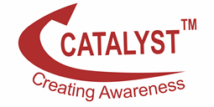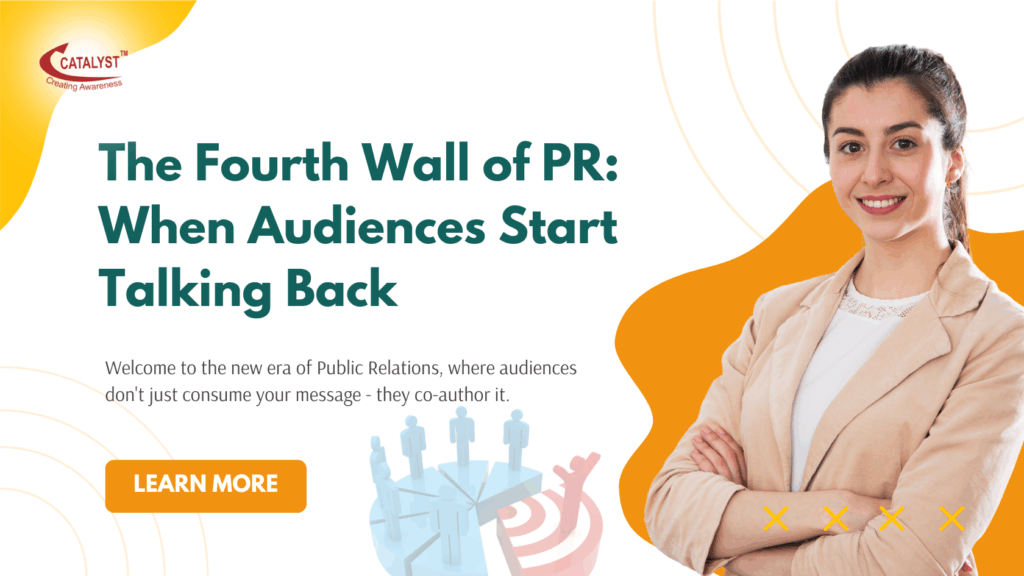Imagine a world where the lines between brands and their audiences are blurred. A world where a press release can trigger memes, a campaign can spark a debate you never planned, and silence can become the loudest headline. Welcome to the new era of Public Relations, where audiences don’t just consume your message – they co-author it.
In 2025, the “Fourth Wall” that once separated brands from the public has officially collapsed. This concept, borrowed from theater, refers to the imaginary wall that separates the audience from the performance. When this wall is broken, the audience becomes an active participant in the story. In PR, this means that audiences are no longer passive recipients of a brand’s message; they are now active contributors, interpreting, editing, and amplifying the narrative.
1. The Rise of the Reactive Audience
Social media turned audiences into reactors. AI turned them into responders. Now, consumers don’t wait for brands to speak – they predict what brands should say. This shift has created a new dynamic: Reactive Reputation Management. PR teams must anticipate the emotion curve of public response, not just the news cycle. Because the audience doesn’t just listen – it interprets, edits, and amplifies.
Key characteristics of the reactive audience:
They are highly engaged and active on social media
The reactive audience expect brands to respond quickly and authentically
They are not afraid to share their opinions and amplify their voices
They can be both supportive and critical of a brand
2. The Meme Is the Message
The modern press release isn’t a PDF – it’s a meme. A single screenshot or trending template can now convey a brand’s stance faster than any official statement. Brands that understand meme language – humor, timing, irony – will build relatability faster than those hiding behind jargon. The art of PR in 2025 isn’t just writing narratives; it’s about translating them into formats that the internet chooses to carry forward.
Examples of memes becoming messages:
A brand using a popular meme to poke fun at themselves
A company creating a humorous video that resonates with their audience
A nonprofit using a trending hashtag to raise awareness for their cause
3. Micro Moments, Mega Impact
Forget viral campaigns that take weeks to plan. Today, reputation is built (or broken) in micro-moments – five seconds of video, one tweet, or a single comment reply. These fleeting interactions shape public memory. PR professionals must now act like real-time narrators, not post-event analysts. Every moment is a press conference. Every platform is a potential headline.
Strategies for managing micro-moments:
Monitor social media conversations in real-time
Respond quickly and authentically to audience inquiries
Use humor and empathy to diffuse tense situations
Be prepared to pivot and adjust your narrative as needed
4. AI Audiences with Opinions
Generative AI has birthed something unexpected – synthetic audiences. AI bots that engage with real human posts, simulate sentiment, and even generate trending opinions. For PR professionals, this means not every comment or backlash is human. But the perception it creates is very real.
Implications of AI audiences:
PR teams must develop strategies to distinguish between human and AI-generated content
Brands must be prepared to respond to AI-generated criticism or praise
AI audiences can provide valuable insights into audience sentiment and behavior
5. The Future Belongs to Conversational PR
PR is no longer Public Relations. It’s becoming Public Reaction Management. The brands that will thrive are those that listen like humans, respond like friends, and act like leaders. Because when the Fourth Wall falls, transparency isn’t optional – it’s survival.
Key takeaways for conversational PR:
Brands must be authentic and transparent in their communication
PR teams must be agile and responsive to audience inquiries
Conversational PR requires a deep understanding of audience sentiment and behavior
Final Thought:
At Catalyst PR, we believe the future of communication lies in co-creation – where brands and audiences share the same stage. The press release is no longer the end of the story. It’s the first line of a dialogue that never really ends.


